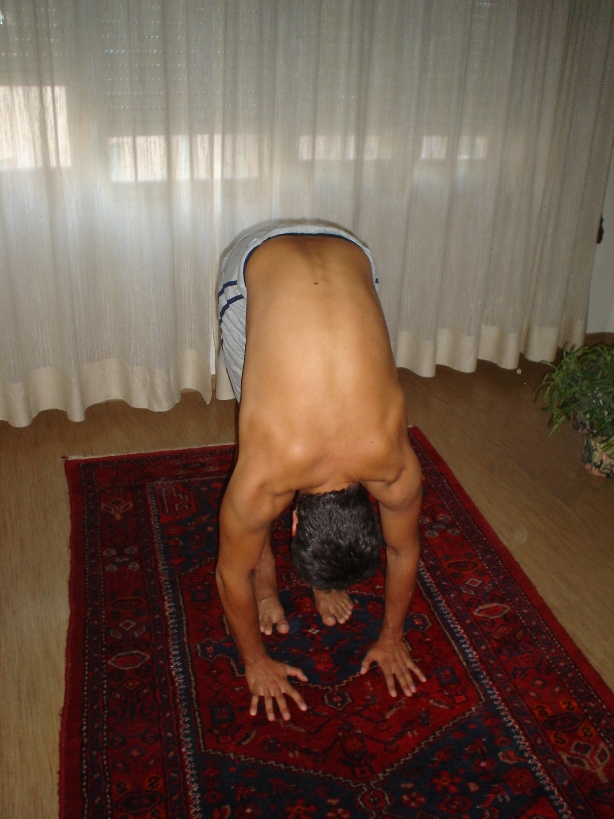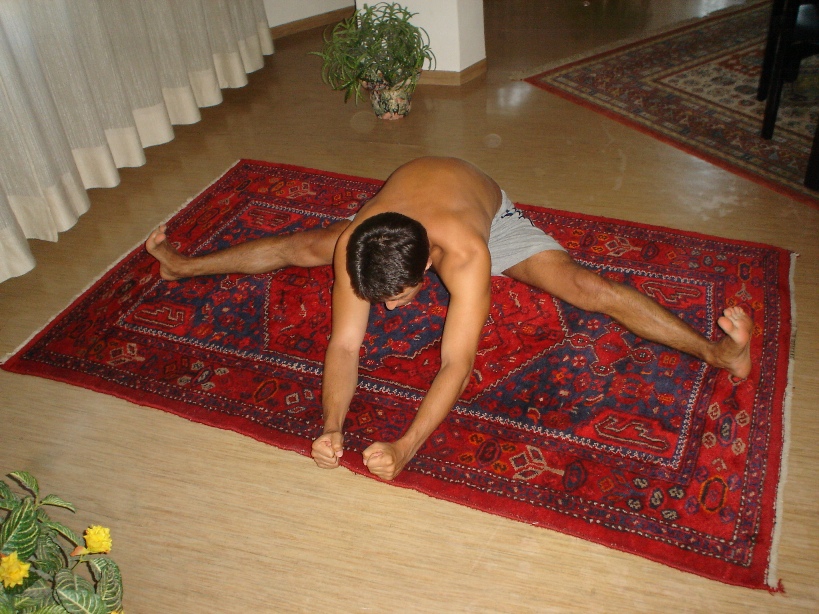Home » Literature Archives » Assault On The Summit Home » Meridians, Meditation, Breathing, and Flexibility
MERIDIANS, MEDITATION, BREATHING, AND FLEXIBILITY
Part 1 - Flexibility
A long time ago a very wise man said, "The journey of a thousand miles begins with a single step." The first advice I give to my students is to make their first step "a step" and not a leap. Patience is a big part of any spiritual regimen; and if a man can't be patient with his own progress, he is not going to succeed. Worse, he may seriously injure himself. Begin, then, with the clear intention to start at the beginning and to learn the basics carefully.
Every time you perform an asana and you feel a gentle stretch of the muscles that are involved in the posture, you are doing the asana perfectly. The perfection lies in the stretching - it is when muscles are stretched and then relaxed that serotonin is released. This is the aim of the asana. Often, when a particular posture is done to "text-book" form, it's necessary to discontinue it for awhile. Then, when the muscles tighten just enough, you can resume the posture so that you again feel the stretch.
The rule for practicing asanas is: If you feel pain, you are doing it wrong. Adrenalin comes with pain. This is a panic - fear, fight, or flight - response, a direction that is opposite to where you want to go. So do not feel pain. A gentle stretch is all that should be felt.
Before beginning any discussion of meditation "seats" or asanas, I am going to recommend that you get started with a few basic exercises. You do not have to make the practice of these postures part of your meditation regimen. In fact, it is better if you keep them separate. The best time to do them is in the morning, before you shower. You do not require special garments - only that the garment you're wearing is sufficiently loose to permit movement. If you have the privacy, you can do them naked, too.

The first exercise is the forward bend. You can learn this in stages. The only requirement is that you keep your legs and back straight. Stretch your arms straight up over your head, clasp your hands, intertwining your fingers. Then turn your palms up and stretch as if you are trying to touch the ceiling with the palms of your hand. Keep your feet flat on the floor and, with straight legs, bend forward from as low as possible on your body, think "hip" rather than waist. So long as you keep your back straight and your arms in line with your back, it does not matter how far down you can bend. Do not force yourself to go past the point at which you feel a gentle stretch. Proceed gradually, keeping your muscles as relaxed as possible. When you stretch, you will feel naturally feel muscle tension. This is part of the stretch. After you feel it, relax your muscles and consider that point to be the limit of the movement for the this session.
I want to repeat that you must control your desire to go farther than you comfortably can. Too many people want to get to the end immediately, so they force themselves to go through the pain. The result is a severe injury. A pulled muscle will destroy your desire and your ability to practice.
Remember to keep your arms straight in a line with your upper body. Imagine that your hip line is the center point of a clock and that you are facing the 3 o'clock side of the clock. First take the noon posture with your arms straight up over your head. Stretch. Relax. Take a deep breath. Stretch again as if you are trying to touch the ceiling; and then, bending low at the hip, move your upper body and arms to the one o'clock position. Relax and exhale. Inhale and stretch and move down to the two o'clock position. Relax and exhale. Next, try 3 o'clock. Remember to keep your legs, back, and arms straight in line with your upper body. If you feel your muscles stretching at any point, hold the posture, feel the stretch, and then relax. You are finished the exercise at the first sensation of stretching muscles. Hold the posture for as long as it's comfortable.
Eventually you will bend forward to 4 o'clock, 5 o'clock, and finally 6 o'clock. You will be able to rest your palms upon the floor.
Again, if you feel pain, you are doing it wrong.

The second posture is one of the spread leg varieties.
Sit erectly on the floor with your legs flat against the floor straight in front of you. Many people cannot do this because their knees seem to be permanently locked in a slightly bent position. If this is the case with you, this exercise will be limited to getting your legs to lie flat on the floor. Sit up straight, place your hands on your knees and gently push down on them until you feel the stretch. Breathe deeply, hold the stretch, and relax and exhale. If you have the time and the desire, you can repeat this as often as you like.
When you are able to keep your legs flat against the floor, open your legs as wide as is comfortable, and bend forward from the hip. Again, think of the clock and begin at noon and then one o'clock, etc. Keep your arms and upper body in the same line. Stretch, breathe, hold the stretch, relax and exhale. Each time you do the exercise try to open your legs a little wider - but never past the point of comfort.
Never try to force an additional stretch by "bouncing" - i.e., by making a jolting movement forward. Have the patience to proceed in a gradual and enjoyable way.
Again, if you feel pain you are doing it wrong.
